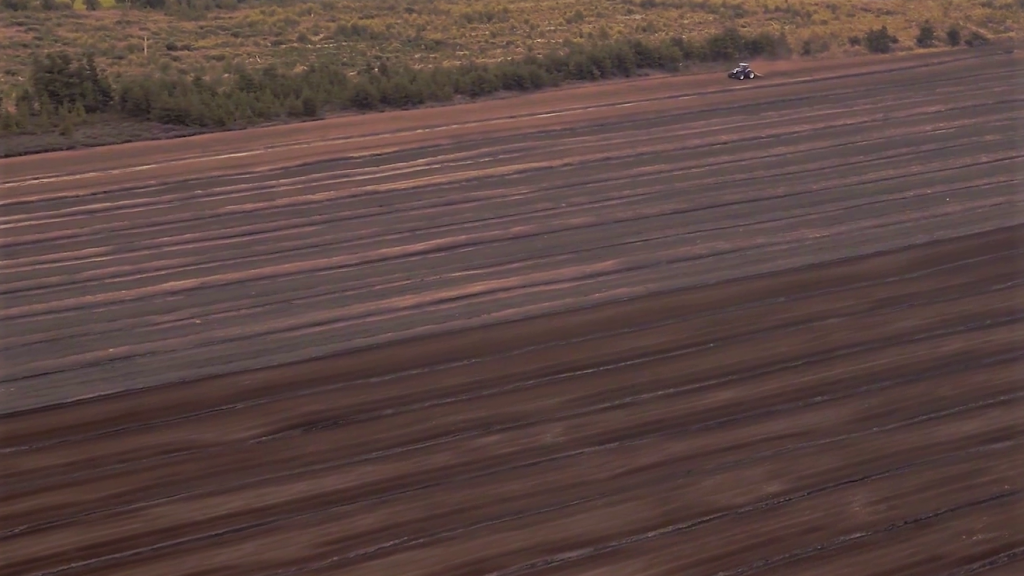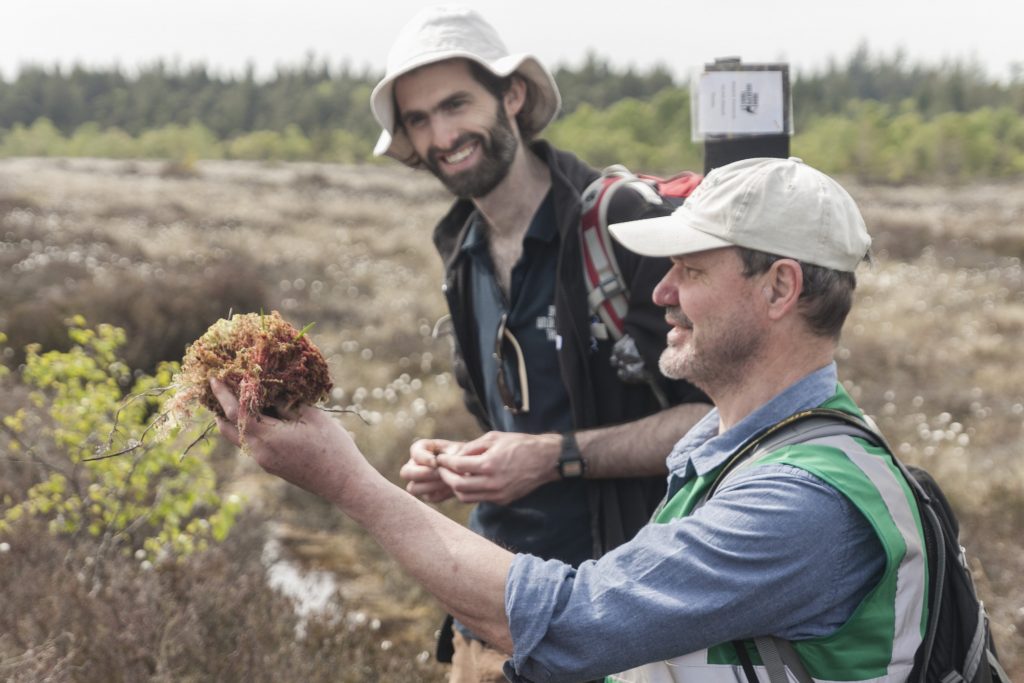‘Crucial climate weapon’ – urgent need to protect and restore our peatlands

October 23rd, 2019
Continued drainage and degradation of Ireland’s bogs will ensure that we lose one of our crucial weapons in our efforts to avoid climate catastrophe, a leading peatland expert has warned.
Speaking at a hearing of the Climate Action Committee this afternoon, UCD’s Dr Florence Renou-Wilson said that restoring our peatlands ecosystem – the largest global store of land-based carbon – is vital if we are serious about going carbon neutral by mid-century.
A major research project led by Dr Renou-Wilson and UCD colleagues between 2007 and 2013 revealed that Irish peat soils contain 1.5 billion tonnes of carbon. This carbon accumulation relies on waterlogged conditions that prevent the complete decomposition of organic matter.
Peatlands also provide vital ecosystem services, supporting wide-ranging and unique biodiversity, as well as filtering water and protecting against flooding.
Yet, today, the majority of peatlands are degraded due to historic and ongoing drainage for extraction for domestic fuel, energy generation and horticultural, and to make way for agricultural expansion and forestry.
According to Dr Renou-Wilson, drainage for the above sectors has impacted the vast majority of our 1.4 million hectares of bog – roughly one-fifth of our entire landmass. This, she warned, has led to the large-scale release of carbon that would have remained within the bog under normal conditions.
It is estimated that 11 million tonnes of CO2 are released every year, even accounting for any carbon sequestered in natural and rewetted bog. This figure is just short of total emissions from the energy sector last year.
“One hectare of drained bog, cutover or cutaway, emits six tonnes of CO2 per year for each year that it remains dry,” Dr Renou-Wilson said.
In addition to high emissions, the peatland scientist said that drainage also leads to the release of nitrates and ammonium, the loss of flood alleviation and water storage, and an increase in the risk of fire at dried out bogs.
The impacts of climate change will only exacerbate this situation, she said, as the likes of summer drought become a more frequent occurrence.

Widespread degradation
It is estimated that only 10 per cent of our raised bog (310,000ha) and 28 per cent of the blanket bog (774,000ha) areas are suitable for conservation that Dr Renou-Wilson said are “barely holding on to their carbon store”.
Blanket bogs are generally found in the west and also in mountainous areas in the east while raised bogs are mainly confined to the midlands.
Raised bogs contain deeper peat deposits while blanket bogs tend to form more extensive carpets across flat or gently rolling landscapes. Ireland holds eight per cent of the world’s blanket bog.
There are currently 75 raised bog (23,000 hectares) and 73 blanket bog (37,000 hectares) areas that qualify as natural heritage areas (NHAs) for their national importance as a habitat or their role in supporting species.
A Bill currently before the Seanad seeks to extend the Government’s power to review the status of bog habitats, including the power to de-designate both raised and blanket NHA bogs.
There are also 53 raised bog sites and 50 blanket bogs that are protected under European law. The proper restoration of the protected raised bogs alone would lock in 28 million tonnes of carbon, Dr Renou-Wilson said.
The blanket bog network – three times greater in size – “could lock in 10 times more carbon” if a proper management plan was in place, she added, reminding the Committee that we have a legal imperative to act, alongside our moral duty to tackle emissions and protect our declining biodiversity.
While there is a national management plan in place for protected raised bog sites, there is nothing yet in place for blanket bogs despite a requirement to do so under the Habitats Directive.
Nine out of 11 peat habitats listed for special protection under EU directives are in ‘bad’ condition, one is ‘inadequate’ and only one is ‘good’, according to the National Parks and Wildlife Service.

Restoration trumps rehabilitation
Dr Renou-Wilson said that full peatland ecosystem restoration or the “low hanging fruit” of rewetting hold the key to halting emissions and making our bogs more climate-resilient.
In both scenarios, the water table is raised and managed, ensuring that degraded peatlands stop emitting “immediately” and instead lock in their carbon store.
They are the preferred options, she said, as opposed to rehabilitation such as abandonment of extraction sites or the re-establishment of vegetation on drained sites without rewetting. In such scenarios, she warned, “peat will continue to decompose and continue to release carbon to the atmosphere”.
“Restoration should be supported where conditions are adequate and, where not possible, the minimum required intervention should be rewetting,” she added.
She also called for funding for local communities to participate in the rewetting and restoration of their local bogs, as well as the roll-out of climate adaptation toolkits to help landowners to “farm carbon” on their holdings.
During the roll-out of Budget 2020, the Minister for Finance Paschal Donohoe TD said that €5 million from revenue raised by the carbon tax will go toward peatland rehabilitation to support the “reduction of greenhouse gas emissions and enhanced biodiversity”.
The Department of Climate Action later clarified that this funding will also go toward restoration work carried out by the NPWS at 1,800ha of bog across seven counties.
Last week, Bord na Móna announced that it will offer redeployment opportunities for up to 200 workers to transition into its program to rehabilitate bogs in the Midlands.







